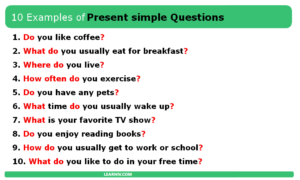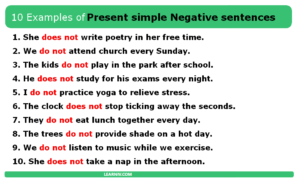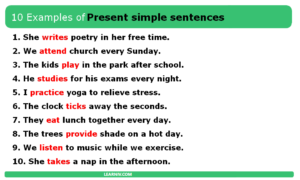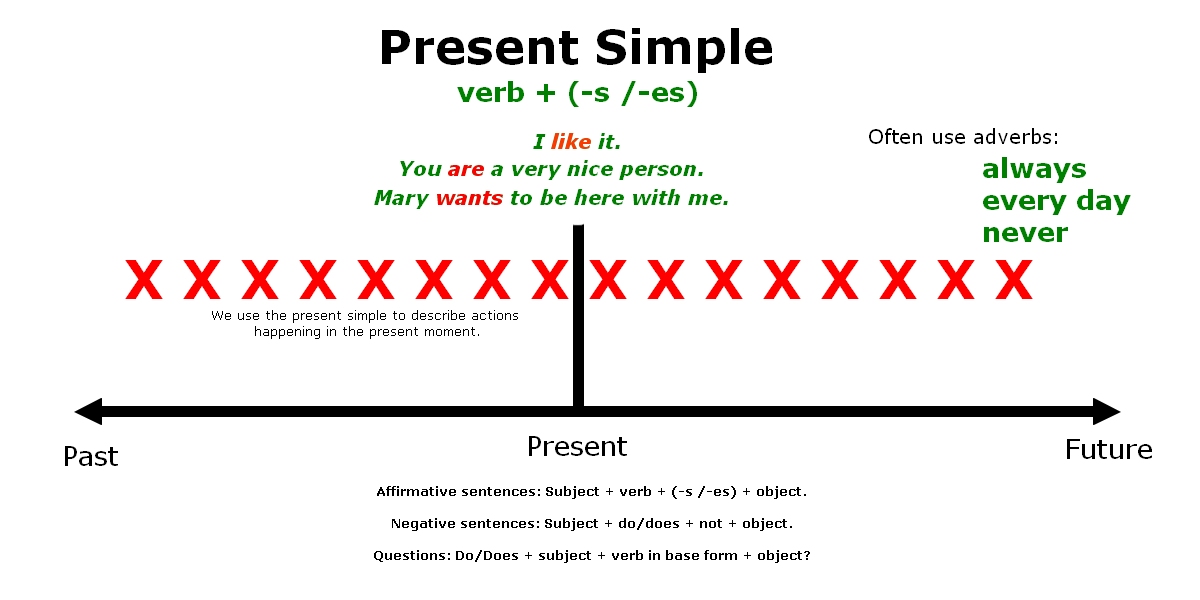 The Simple Present tense is used to describe actions or states that are habitual, ongoing, or permanent. It is called “simple” because it has a basic structure that does not require the use of auxiliary verbs.
The Simple Present tense is used to describe actions or states that are habitual, ongoing, or permanent. It is called “simple” because it has a basic structure that does not require the use of auxiliary verbs.
Simple present tense affirmative structure and examples
Simple present affirmative structure
In the simple present tense, affirmative sentences follow a subject-verb-object (SVO) order. The verb used in the sentence is always in the base form, which means it is not conjugated for any subject or tense.
Structure:
Subject + Verb (base form) + Object
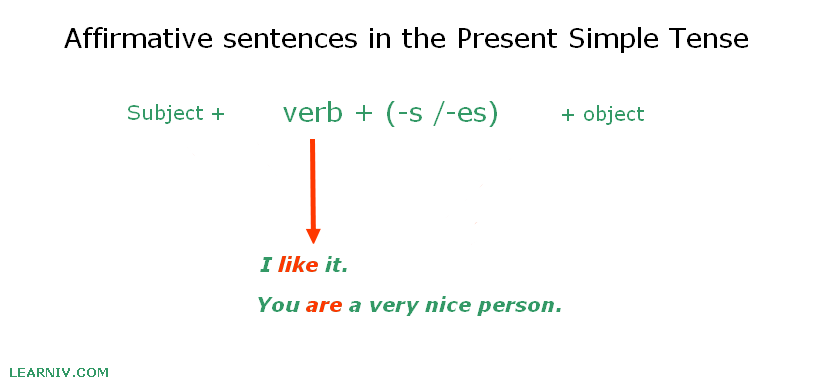
Simple present affirmative examples
- She sings a song.
- They play football.
Simple present tense negative structure and examples
Simple present negative structure
To create a negative sentence in the simple present tense, we add the auxiliary verb “do” in the negative form (don’t or doesn’t) before the base form of the verb.
Structure:
Subject + do/does + not + Verb (base form) + Object
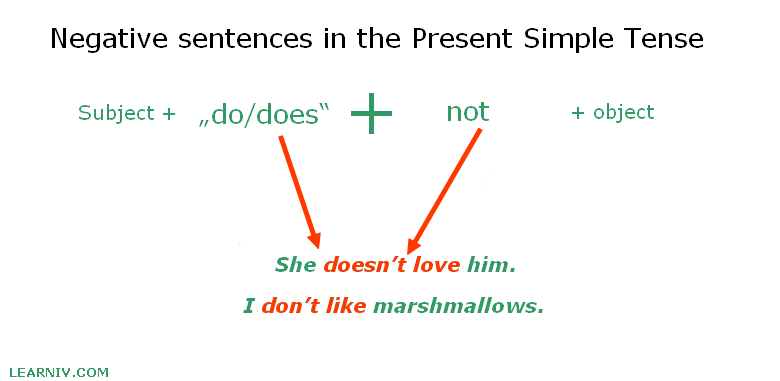
Simple present negative examples
- He doesn’t eat meat.
- We don’t watch TV.
Simple present tense interrogative structure and examples
Simple present interrogative structure
To create an interrogative sentence (questions) in the simple present tense, we start with the auxiliary verb “do” or “does” followed by the subject and the base form of the verb.
Structure:
Do/Does + Subject + Verb (base form) + Object?
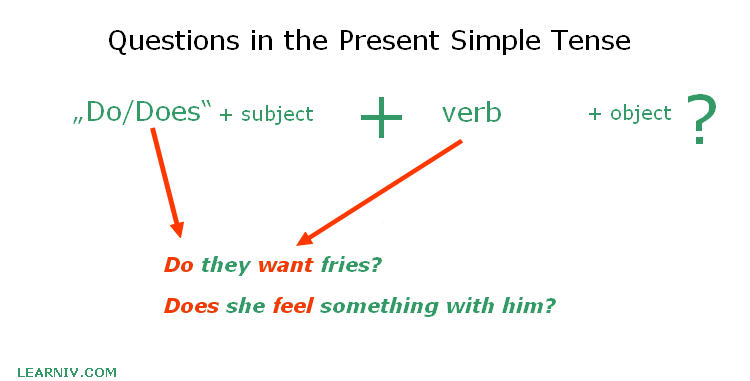
Simple present interrogative Example
- Do you like pizza?
- Does he play guitar?
Another marking for the simple present tense
The present simple tense is also called the “simple present tense”, “present indefinite tense” or “present indicative”.
Using the simple present tense
We use the present simple tense in the following situations:
- To describe actions or events that are habitual or repeated regularly: Example: She goes to the gym every morning.
- To describe facts or general truths: Example: Water freezes at 0 degrees Celsius.
- To describe states or conditions that are currently true: Example: He speaks French fluently.
- To describe future events that are scheduled or arranged: Example: The train leaves at 9 pm tomorrow.
- In storytelling to describe actions that move the story forward: Example: The wolf eats the little pig.
Overall, we use the present simple tense to describe actions, events, or states that are ongoing or permanent, and to express general truths or scheduled future events.
Examples of sentences
See also
We have prepared several separate articles with examples and sentences:
- General examples of present simple tense
- 5 sentences of simple present tense
- 10 sentences of simple present tense
- 20 sentences of simple present tense
- 100 sentences of simple present tense
